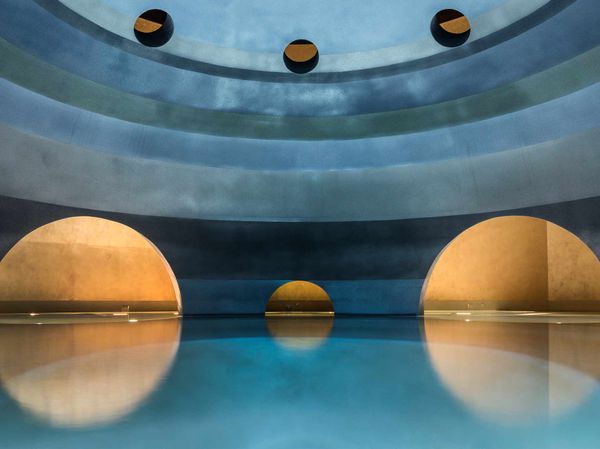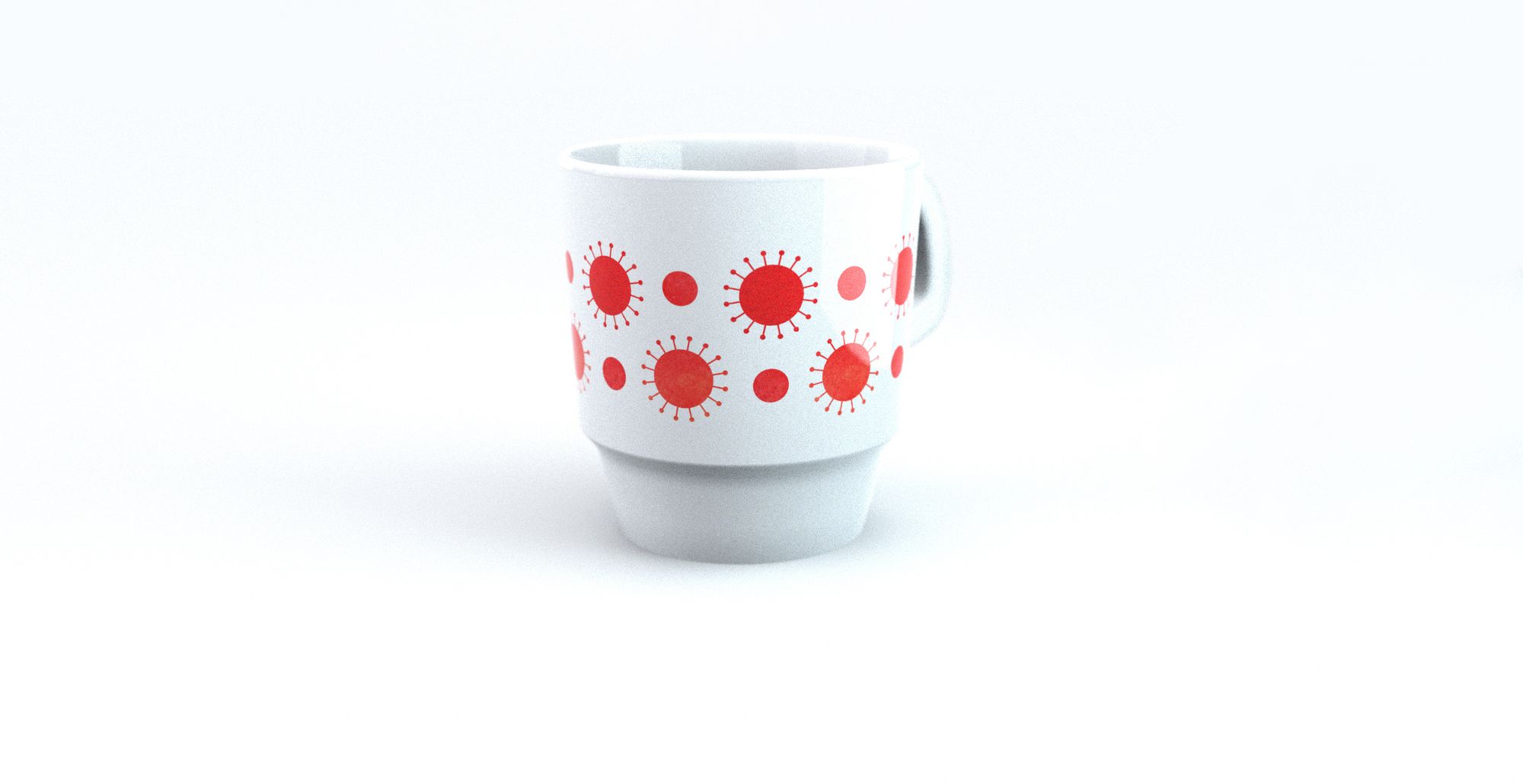The Object Fetish series that debuted in spring 2019 will launch again soon, in which design theorists Kitti Mayer and Piroska Novák will go after the emblematic objects. Until then, here is a brief yet relevant investigation as a warm-up.
Written by Piroska Novák
In the past few weeks, many of my friends sent me the following picture as an attempt to resolve the tensions caused by the current state of emergency and the forced lockdown with its ironic, updated content presented with humor.
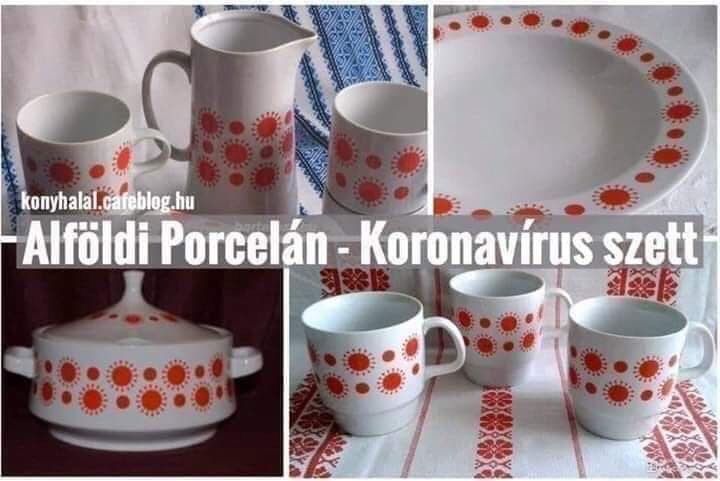
The edited photo montage shows some items of a porcelain tableware set, in the style of the 1960s. There is a vivid red, sticker decor, with elements resembling the COVID-19 virus. The sign on the image makes the humorous content obvious: “Alföldi Porcelain – The Coronavirus Set”.
The original source of the image shared by many accounts in social media, thematic blogs and also forums dedicated to ceramists is the Facebook page of konyhalal.cafeblog.hu gastro blog, where it was published back in March. Reading the comments accompanying the shares, I thought that besides making fun and nostalgia, somehow the introduction of the tableware set and its designer is virtually ignored.
Of course, the tableware set had nothing to do with the coronavirus originally, but it was indeed a product of the Alföldi Porcelain Factory, the distribution of which started in 1971 and it was produced in Hódmezővásárhely until 1982 (1). It was designed by Istvánné Torma (maiden name: Mária Viglási), who came up with the bold shapes originally in 1965 for the tableware design competition of Alföldi Porcelain Factory, and her idea brought her victory. She submitted the proposal of her design project under the theme “Krisztina”, but the series-produced tableware was first placed on the market under the name “Krisztina-202” and then later on “Centrum Varia”, decorated with various stickers, but indisputably the most famous one is the version with the “little red suns” , into which the sharp-eyed fans of retro now visualized the shape of the coronavirus.

In order to understand the back story of the tableware set and the wave of nostalgia its updated photo montage brought on, we should dedicate some thoughts to presenting the situation of the ceramics culture and the silicates industry at the time.
The 1948-1949 nationalization and the introduction of the administrative command system following World War II brought a significant turning point in the life of Hungarian ceramics factories and porcelain plants. In 1963, this was followed by the measure of putting all factories under the control the Finomkerámiaipari Országos Vállalat (FOV) (Fine Ceramics National Corporation), which continued to operate under the name Finomkerámiaipari Művek (FIM) (Fine Ceramics Works) from 1968. FIM was authorized to dispose over the following companies: Alföldi Porcelain Factory, Budapest Porcelain Factory, Gránit Grinding Disc and Stoneware Factory, Herendi Porcelain Factory, Hódmezővásárhelyi Majolica Factory, Hollóházi Porcelain Factory, Kalocsai Porcelain Painting Plant, Kőbányai Porcelain Factory, Romhányi Construction Ceramics Factory, Városlődi Majolica Factory, Zsolnay Porcelain Factory (2). Control also extended to issues regarding personnel, the employment of designers, determining the product palette, distribution matters and announcing central calls. These calls included the tableware competition announced in 1965 in collaboration with the Council of Applied Arts, which was developed in a manner adjusted to the technological qualities of the Alföldi Porcelain Factory established in the very same year in Hódmezővásárhely (3). In addition to designing a complete tableware set that can be varied with the existing sets of consumers, the two-fold goal of the tender was to design dishes that can be purchased item by item. The committee evaluating the proposals, as I have revealed previously, found Istvánné Torma’s modern set made under the theme “Krisztina” suitable for production. It’s important to stress the attributes ‘modern’ and ‘clean’, as in the majority of FIM’s factories, anachronistic design was a requirement: the Neo-Baroque, Neo-Rococo style objects rich in paint and gilding that were subconsciously associated with the symbolic meanings of porcelain and its value-representing image. It’s enough to think about the product palettes of the Herendi, Zsolnay and Hollóházi Porcelain Factories, as these brands are still prisoners of their previous, traditional shape and decoration traditions in part.
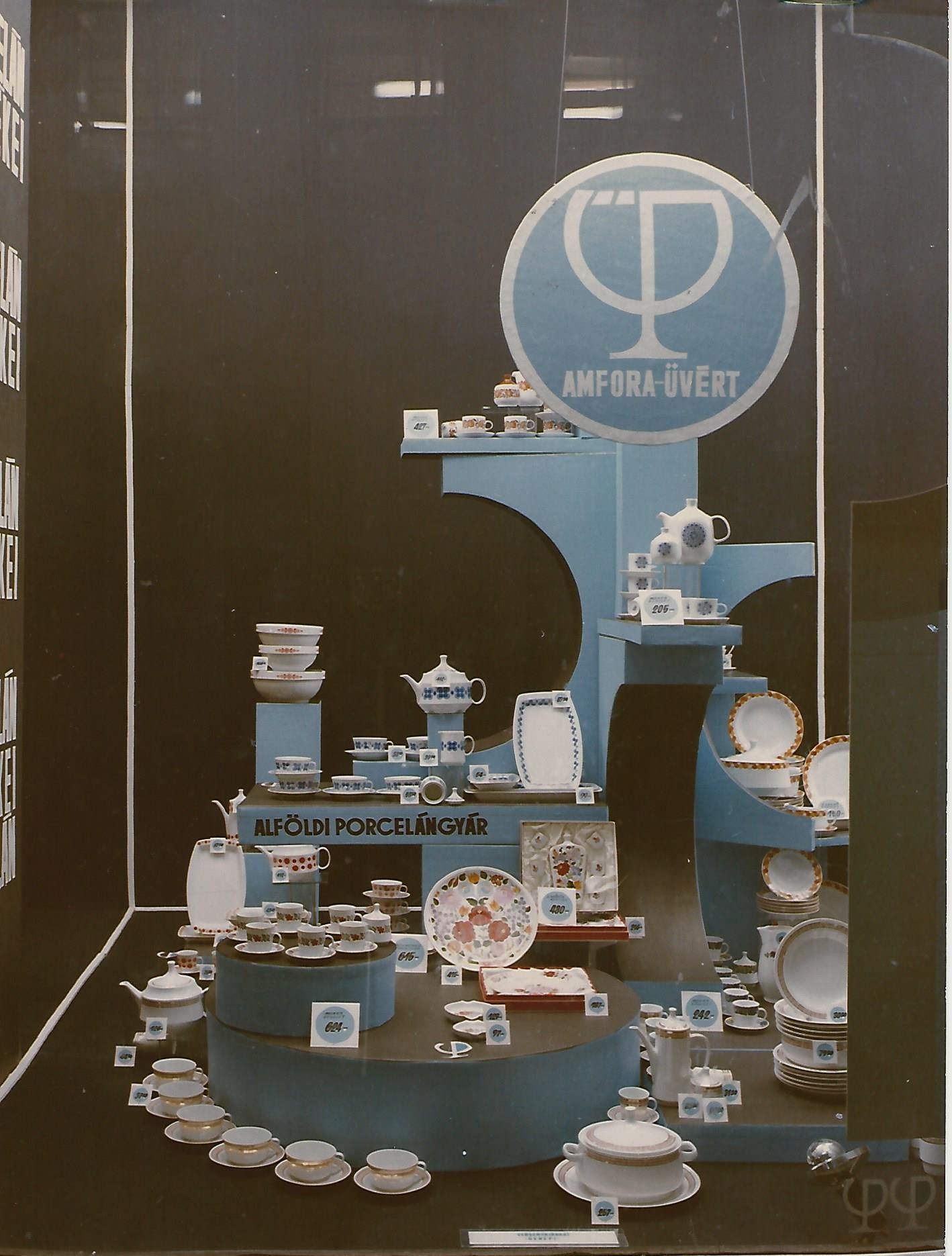
Prior to the regime change, Alföldi Porcelain Factory was a factory equipped with the most modern technology in the country (and even in Central Europe, according to propaganda at the time) encompassing all specializations, with a semi-automated machinery imported from the East Germany. According to the directives of FIM, the task of Alföldi Porcelain Factory was to satisfy Hungarian consumer needs with household porcelain items, and they also had to produce a lot for export purposes. Adding new items to the set of shapes of the semi-automated machinery would have been expensive, so they rarely introduced objects with new designs. They distributed the existing sets with different decor elements, so that buyers could feel that they were choosing porcelain tableware in their homes based on their individual taste. The patterns decorating the porcelain objects were most of the time designed by qualified designers, in lucky cases by the porcelain designer who designed the shapes, too. They fired the patterns in the form of decor stickers onto the objects on low heat. The graphical quality of these was quite varied, many times the clean, functional shapes were completely overridden by the colorful and loud patterns. For porcelain designers, designing patterns was a secondary, and somewhat degraded and subordinate work, they would rather had their designs in snow white, without any decorations (4).

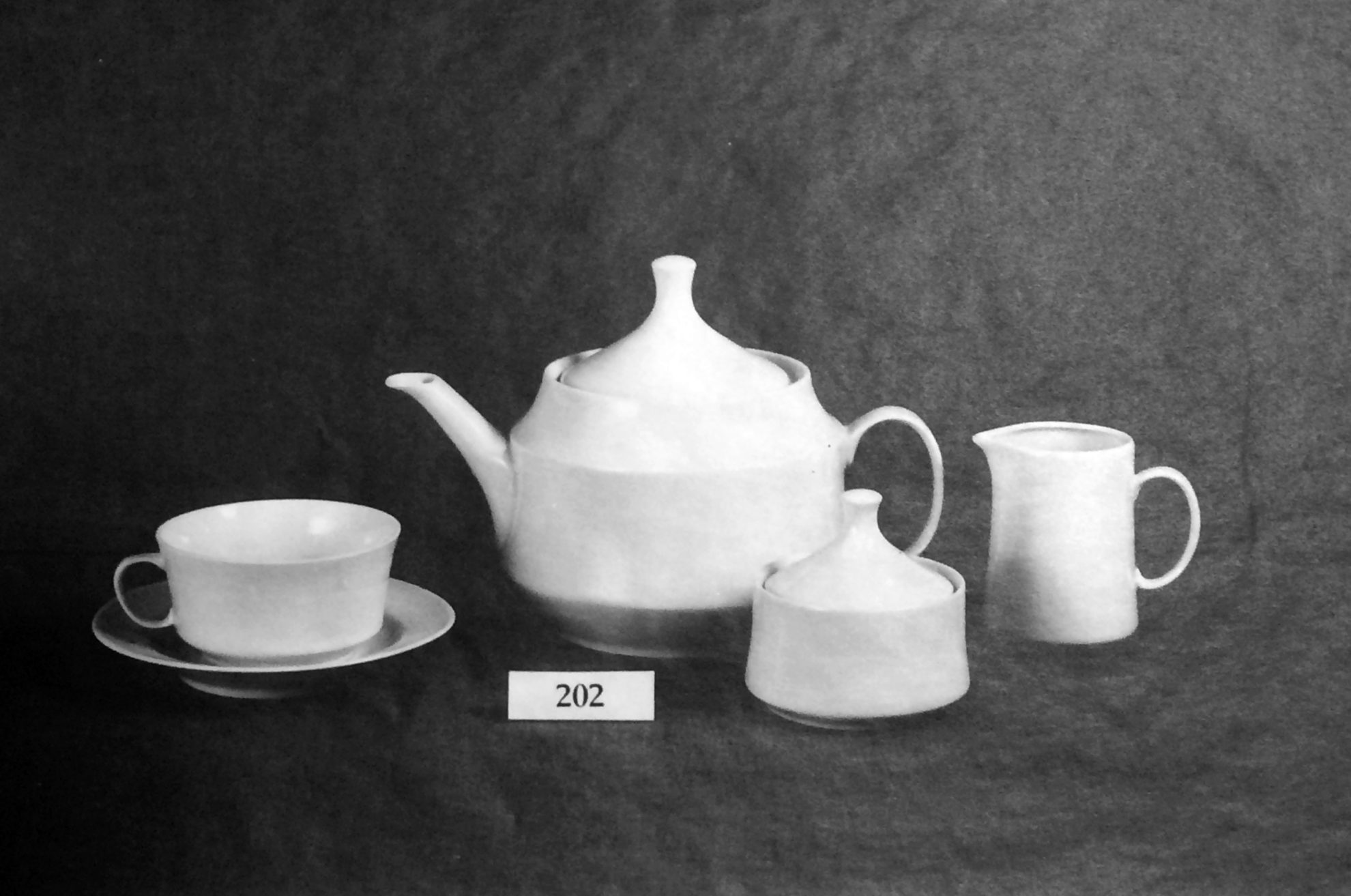
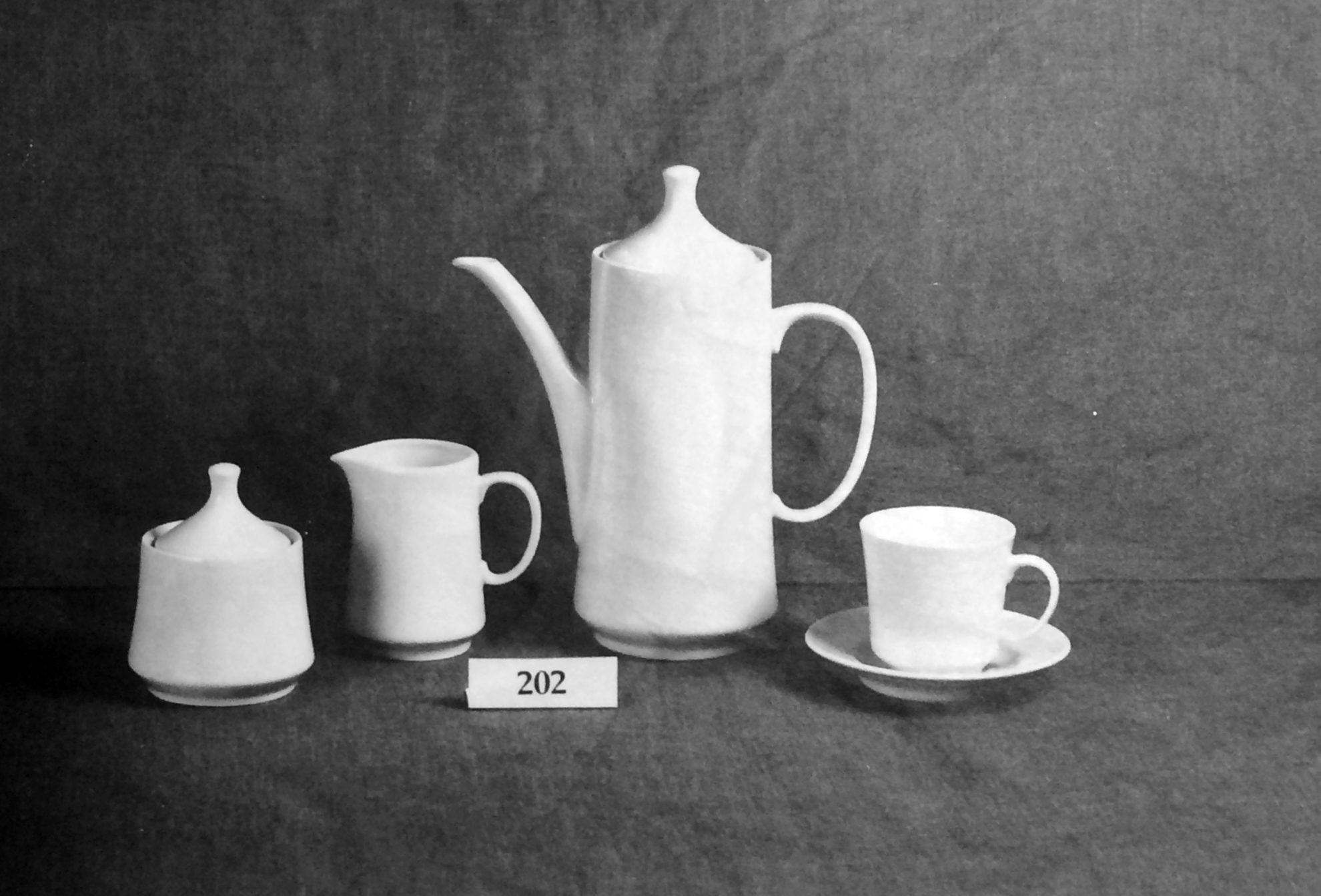
At this point, my research as to who designed the “little red suns” that is the “coronavirus pattern” got stuck. With the resources available in the current situation, I could not get a lead on who the designer was.
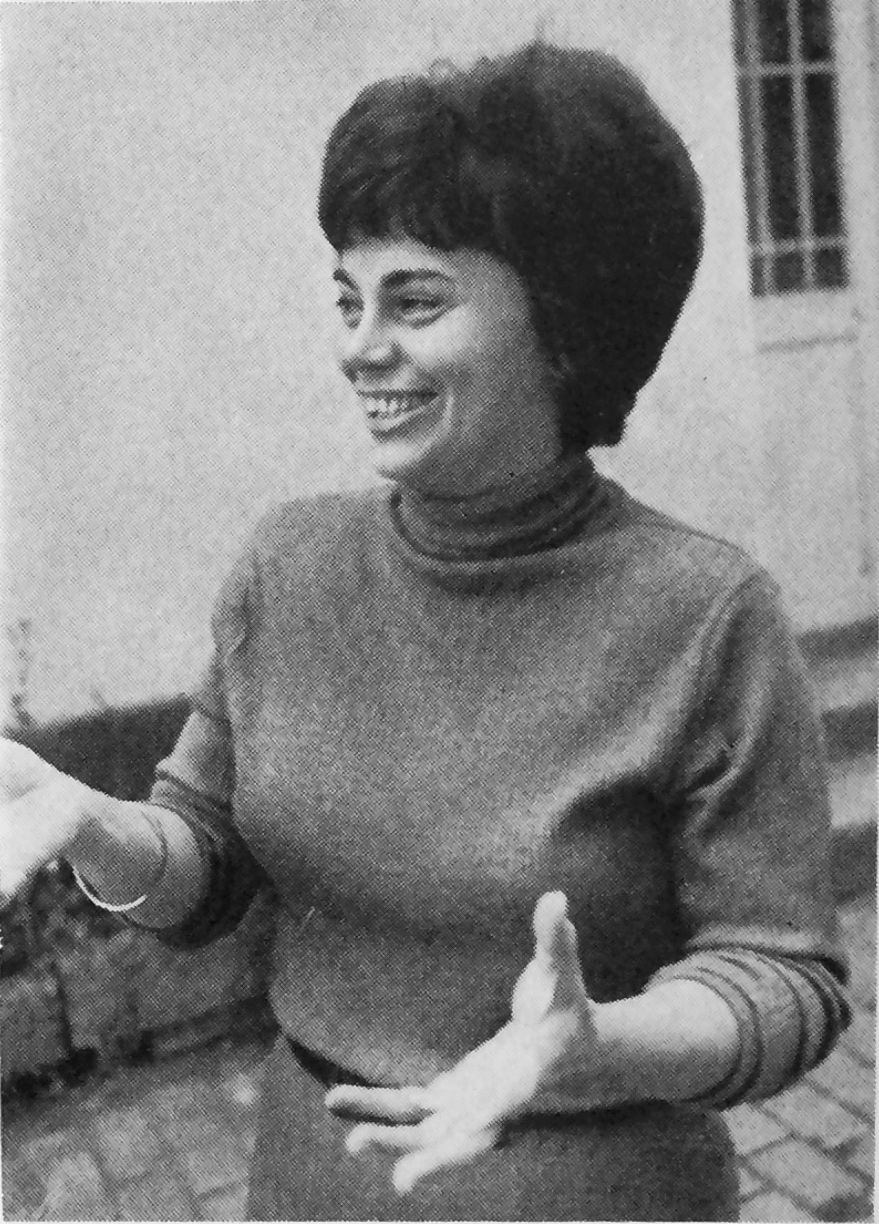
The designer of the Krisztina-202 (Centrum Varia) set, Istvánné Torma graduated from the department of porcelain design of the Hungarian College of Applied Arts in 1958. Then she worked as a designer in the Herendi Porcelain Factory until 1961. Then she transferred to Kőbányai Porcelain Factory, and continued her career in Hollóházi Porcelain Factory between 1968 and 1991 first as a designer and later as an art director. In Hollóházi Porcelain Factory, in addition to the tableware and cladding elements, she also designed statuettes, or figurines in common parlance. In 1986, she won an Award for Excellence in Industrial Design with her “Pannónia” tableware set consisting of more than seventy pieces and also containing ornamental articles. It’s interesting to observe the modern shapes of the Centrum Varia and the Neo-Baroque elements of the Pannónia set. Both set of objects is the work of the same mind, the difference comes from the artist’s freedom in design. When designing the Pannónia set’s anachronistic, Neo-Baroque lines, the designer had to adjust to the product palette of Hollóházi Porcelain Factory representing traditions. We should also add that this is what the majority of consumers expects from them, therefore it does not come as a surprise that the Pannónia collection is still manufactured at Hollóházi Porcelain Factory.

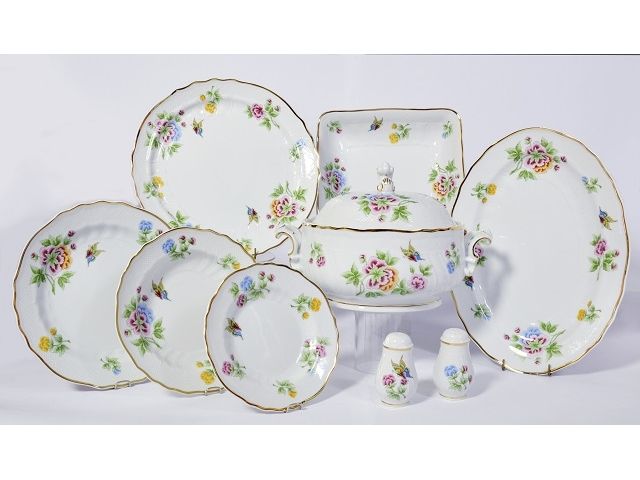
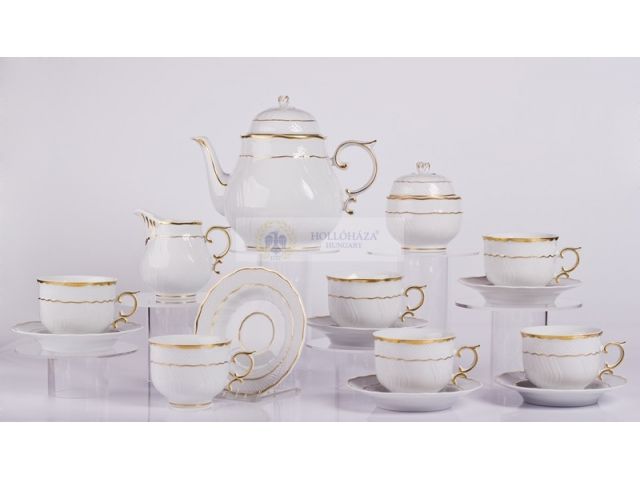
The Centrum Varia set was manufactured in Alföldi Porcelain factory for ten years. The main reason behind its popularity was that it could be purchased item by item, so if some pieces of the set were broken due to usage, the consumers could easily replace them. The set’s name also implies that it was also sold in the National Centrum Department Stores, this was a frequent element of advertisements of the time, too.
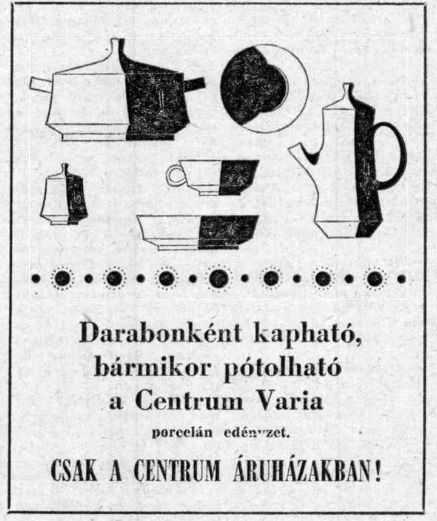

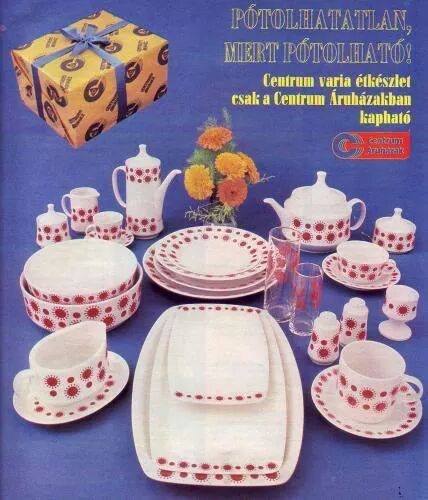
The humor in the objects, even if only to a small extent, can hopefully contribute to surviving this difficult and challenging period with the least loss possible. May we spend our time at home with doing research or nostalgia, the serious and at the same time funny retro collections of konyhalal.cafeblog.hu (for example: here, here andhere) or the rich Alföldi Porcelain collection of the Instagram feed of menzaminta could be a great help.
Epilogue
I was really close to giving up on finding out who designed the “coronavirus pattern” for Istvánné Torma’s Krisztina-202 (Centrum Varia) tableware set, when a lucky turn helped me get through my nadir. The solution was brought by porcelain designer Éva Ambrus, who also worked at Alföldi Porcelain Factory between 1967 and 1984 as a designer and later as an art director. She remembered and shared with me that the decor that officially went by the name “Pöttyöske” (Polka Dots) was designed by her colleague Edit Kis (5). Therefore, similarly to other tableware sets born in the era subject to my research, the shape and the pattern belonging to it was designed by two different designers in this case, too. As opposed to Istvánné Torma, there was not much to find out about the activities of Edit Kis.
She graduated from the department of porcelain design of the Hungarian College of Applied Arts in 1957. Then she was hired by Gránit Grinding Disc and Stoneware Factory, and then she transferred to the tableware factory unit of Alföldi Porcelain Factory, where she was not only functioning as a designer, but also as an art director until 1971. Then she returned to Gránit Factory. Her set designs were rarely put in mass production, but her decor designs were used frequently. In addition to Pöttyöske, the Menza pattern making a motif out of varying green, blue and red (sometimes yellow, orange and dark red) stylized flower heads consisting of five petals also became quite wide-spread and renown, which was not used exclusively on porcelain objects.
The lucky turn mentioned in the beginning of my epilogue also implies that in the next part of the Object fetish series, we will focus on the history of one of Éva Ambrus’ designs.
(1) The production of the Krisztina-202 (Centrum Varia) designed by Istvánné Torma 1965 was announced by the Alföldi Porcelain Factory in 1981. They wanted to replace the mass-produced tableware proved to be quite popular with the set named “Blanka” in 1982, designed by Olga Németh. For more info see: HAJDÚ Éva (1982): „Blanka”. Új edénykészlet („Blanka”. New tableware). In Magyar Nemzet’s issue on July 2. 1982, 4.
(2) For more info see: L. szerzői néven (1973): Formatervezők a finomkerámia-iparban (Designers in Fine Ceramics Industry). In Ipari Művészet. 1973/6., 6-7.
(3) The sources that are currently available in this situation mark the referenced tableware competition of Alföldi Porcelain Factory with different dates. In my article, I used the data included in Éva Ambrus’ manuscript (the porcelain designer of Alföldi Porcelain Factory between 1967 and 1984). “The Council of Applied Arts and FIM announced a competition already back in 1965 at the commencement of building the factory for the designers working in the profession in the subject of the tableware to be manufactured at Hódmezővásárhely; this competition was won by Istvánné Toma’s »Krisztina« set. Production started in 1970-71.” AMBRUS Éva (2016): A finomkerámiaipar helyzete a ’60-as évektől. (The Situation of the Fine Ceramics Industry From the ‘60s.) [Manuscript, without page numbers, the quote is from the 6th sheet] In Museum of Applied Arts, Data base collection, KLT 4307/1-8.
(4) The professional partner of the Object Fetish series is the Museum of Applied Arts, the Ceramics and Glass Collection of which contains an undecorated Centrum Varia set, a so-called white goods, in the form of – yet – unprocessed, deposited material.
(5) I would like to thank Éva Ambrus for her help once again!
Cover photo – 3D render: Róbert Farkas

Carpathia | Nicholas J R White
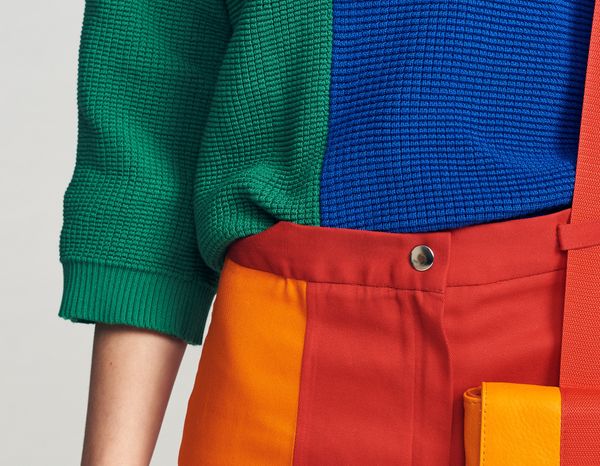
Color is the basis of everything | Szilvia Farkasdy's fabrics
